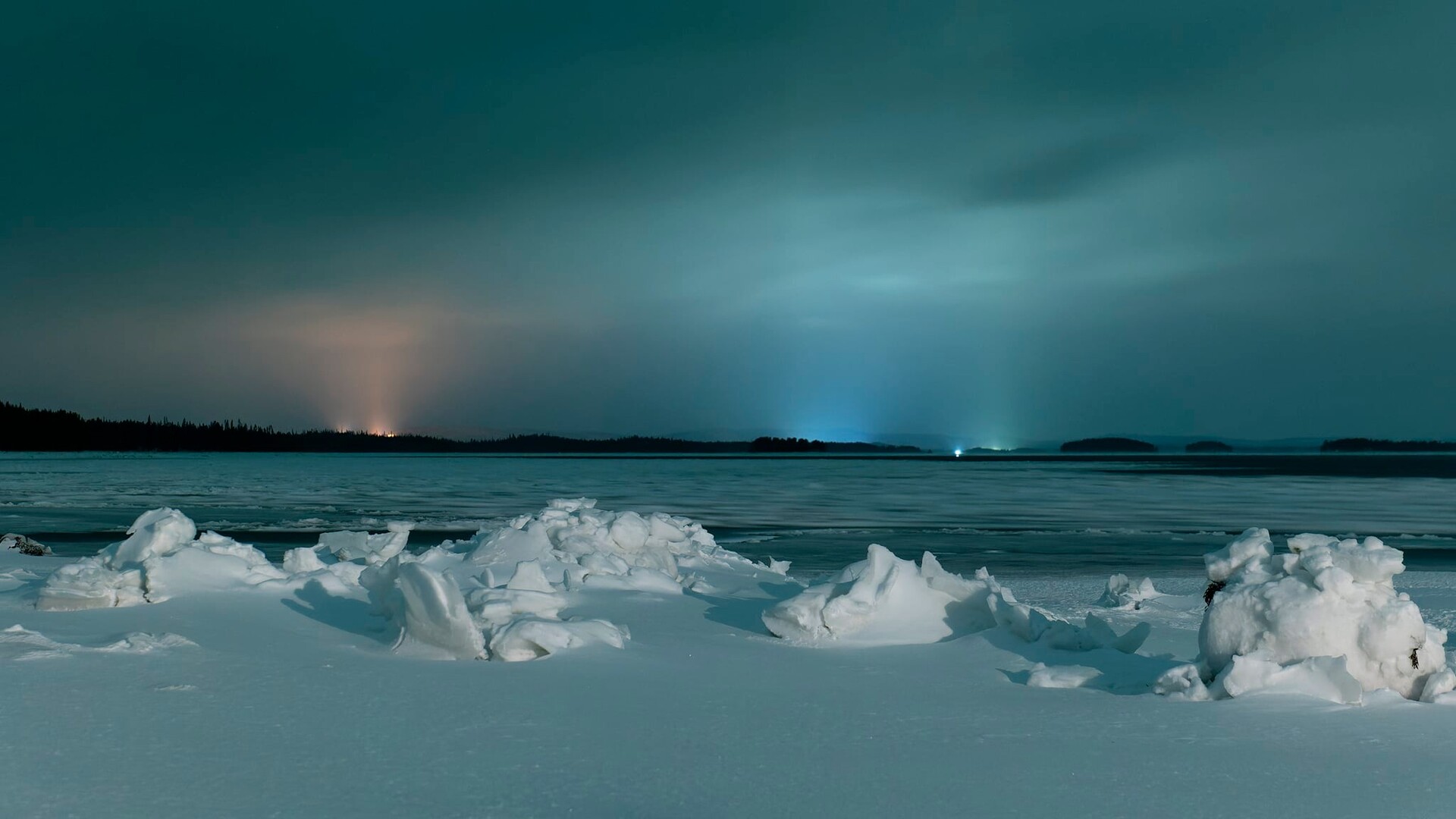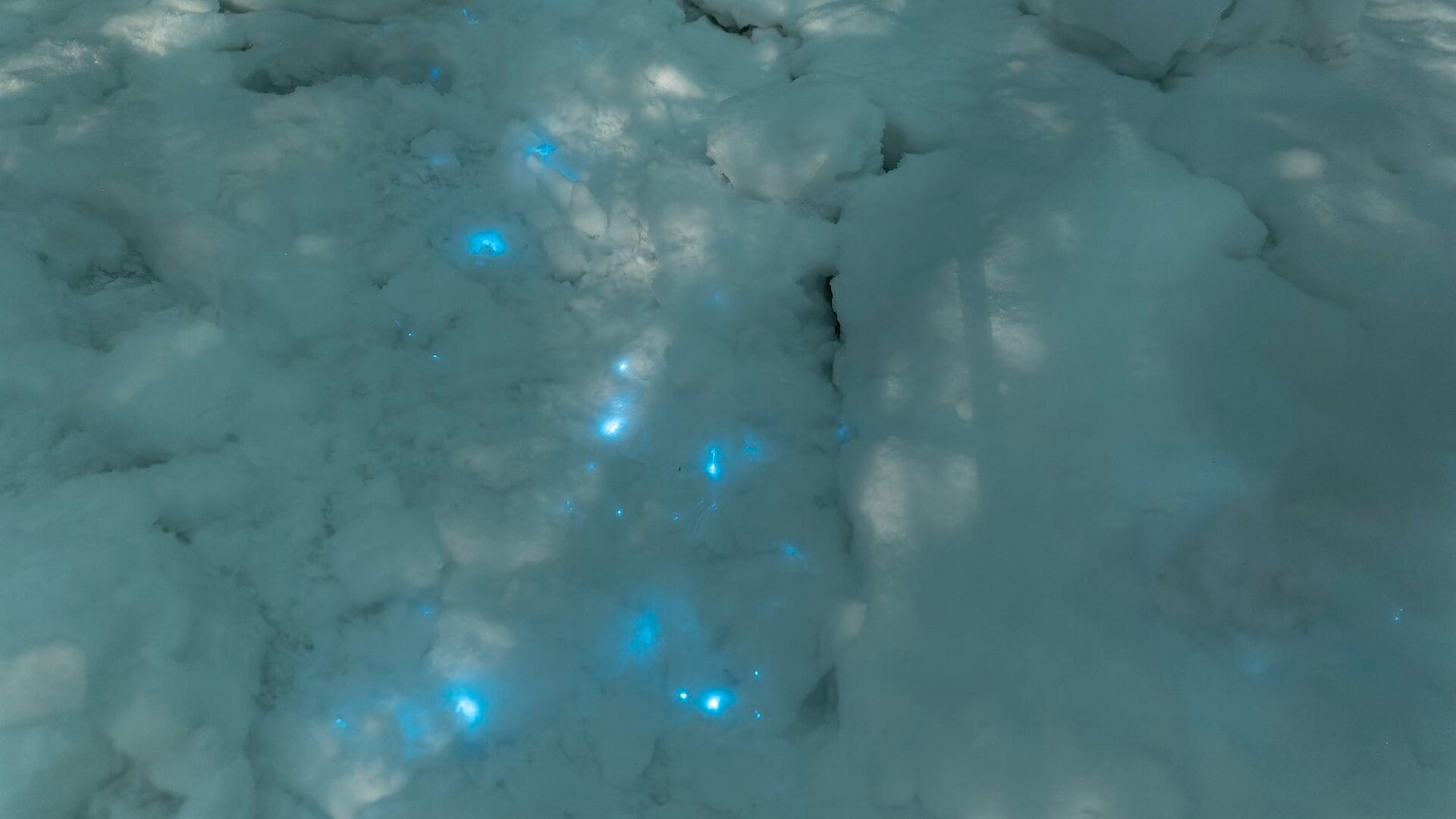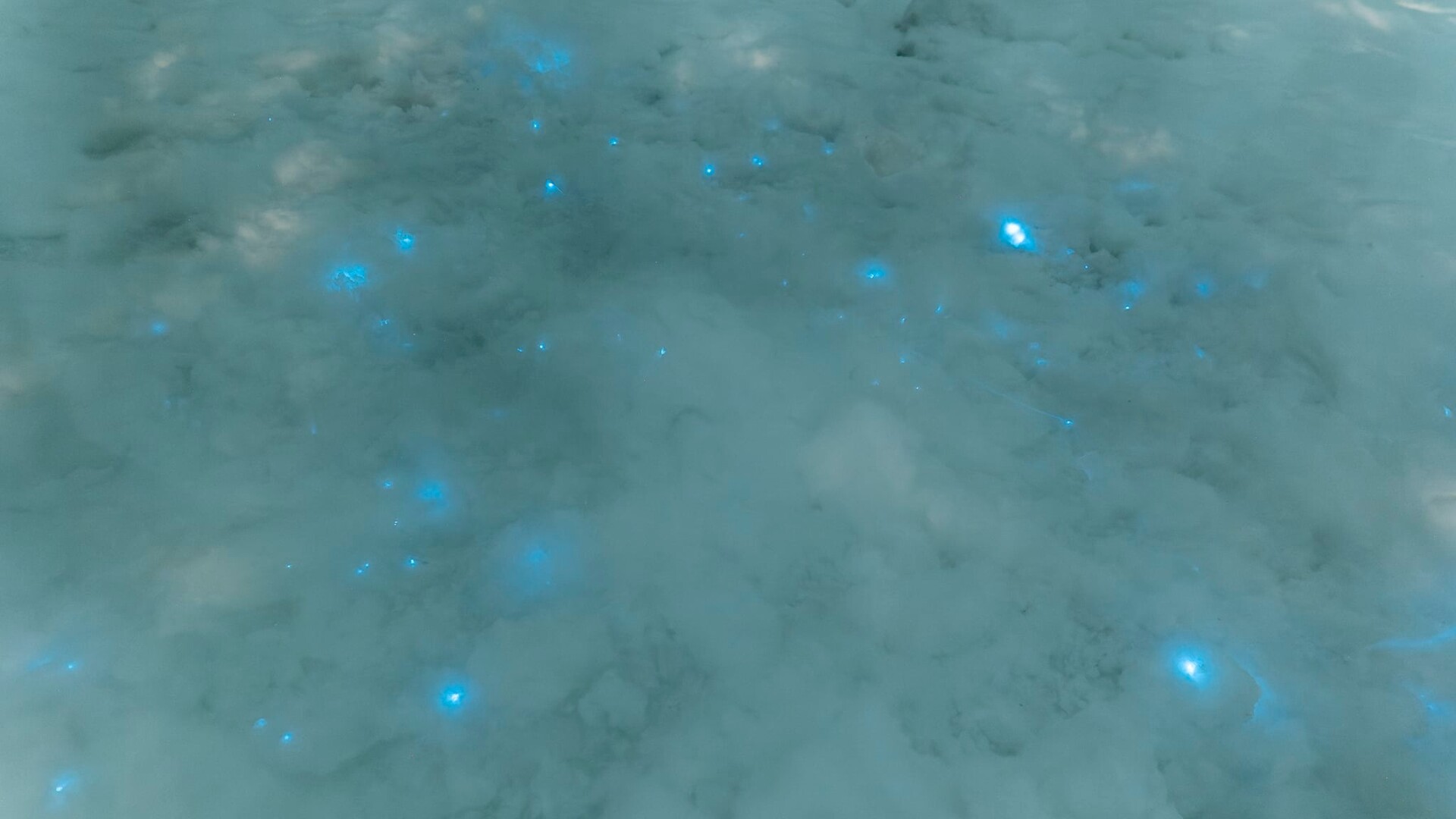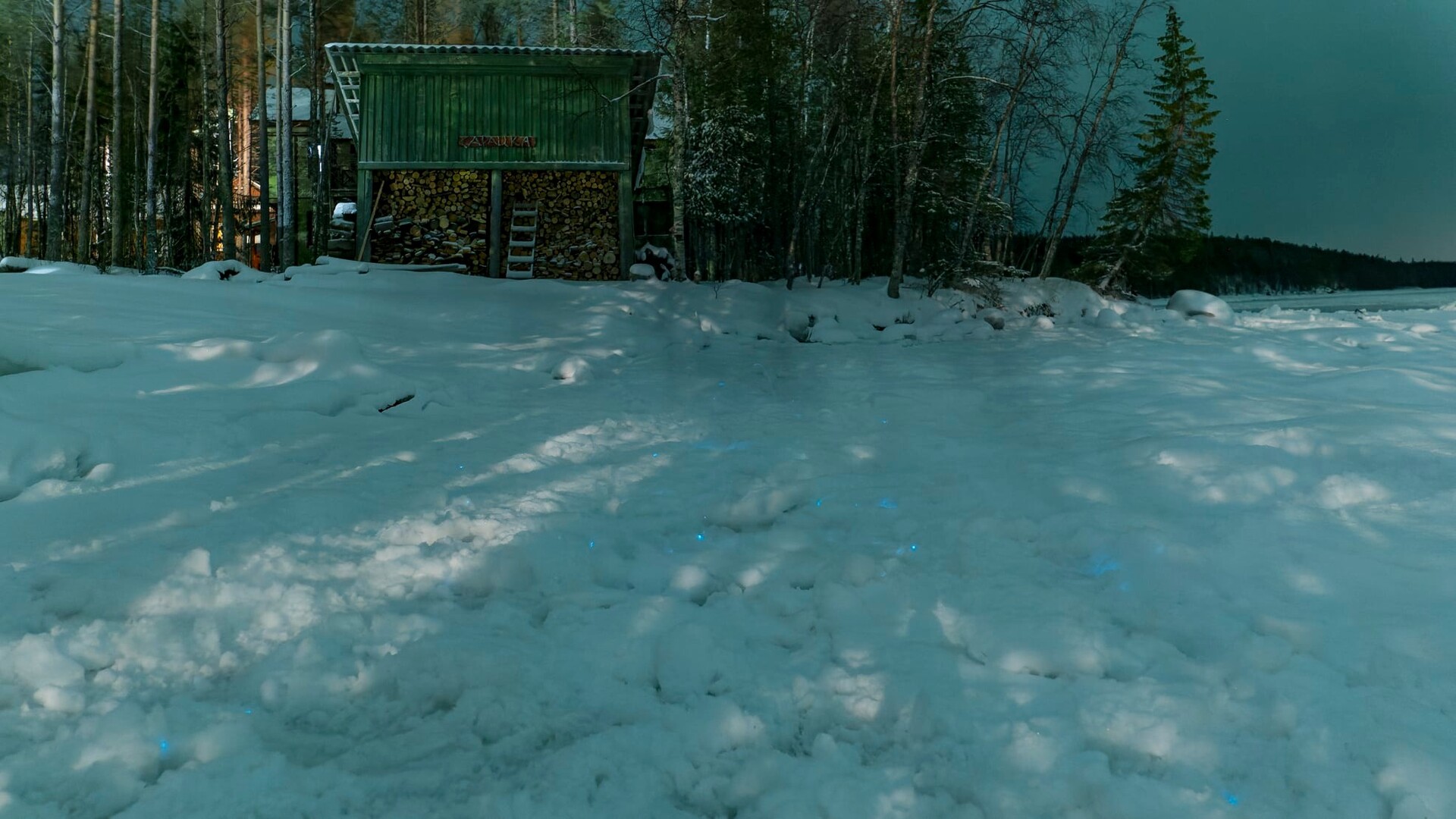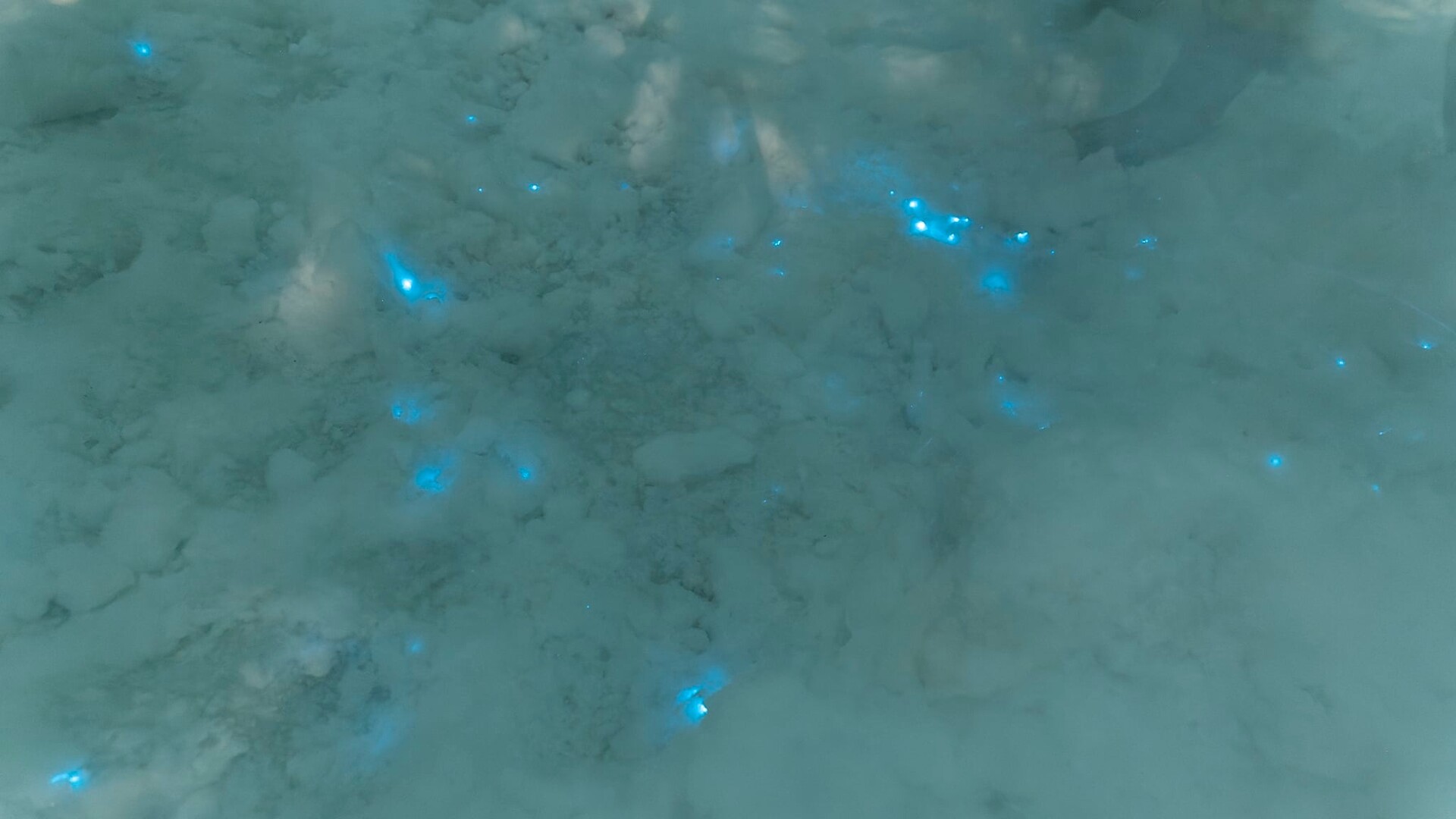SNOW that glows was found in the Arctic (PHOTOS)
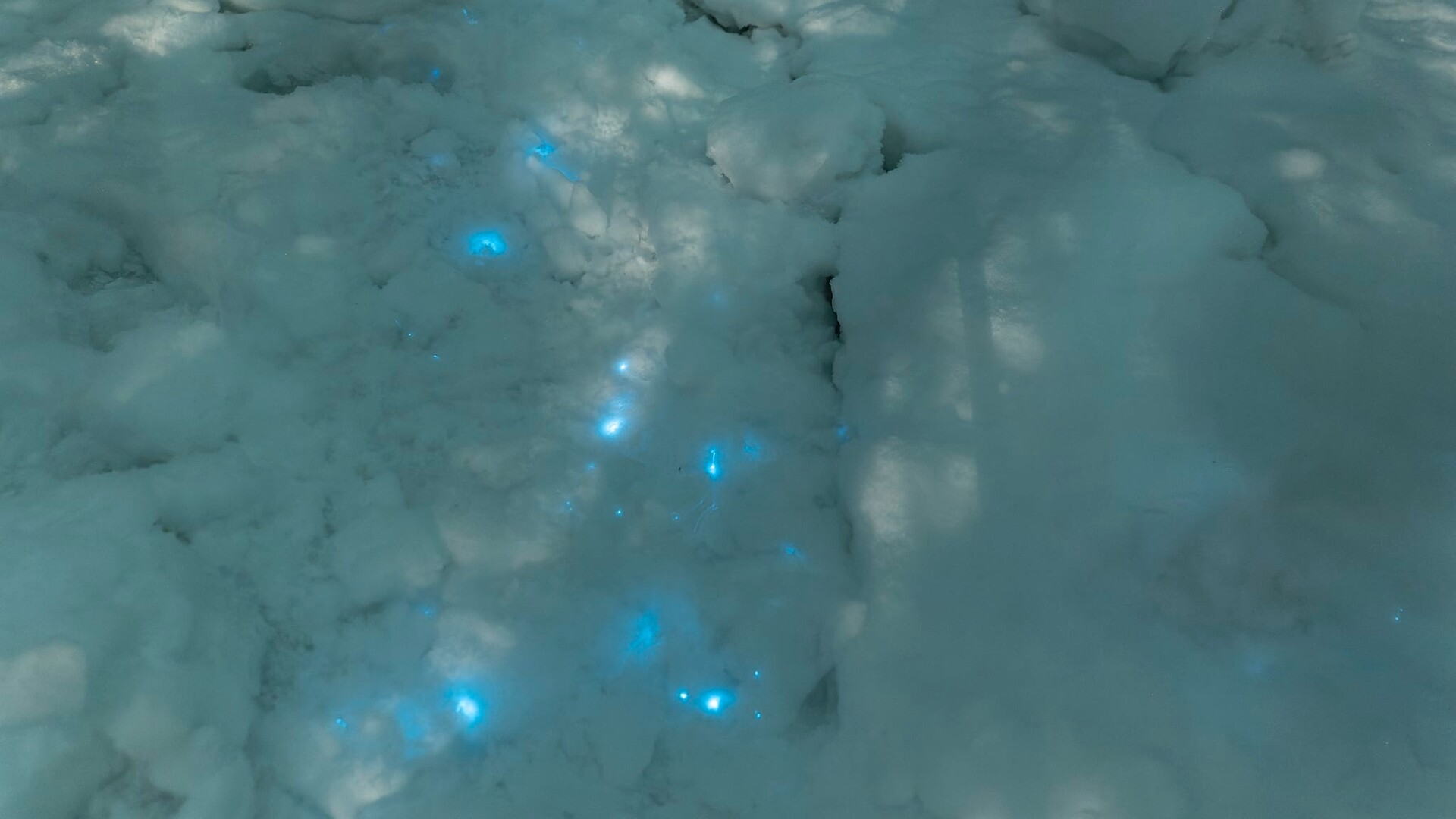
On a recent December night, Russian biologist Vera Emelianenko went for a walk to the White Sea coast with Mikhail Neretin, son of the station's molecular biologist, and a pair of dogs.
In one of the drifts, Neretin noticed a blue glow that looked like Christmas lights. Emelianenko took a handful of snow; when squeezed, the snowball glowed even brighter. Dogs running through the snow left a glowing trail behind them. At the White Sea scientific station of Moscow State University in the Arctic, where Emelianenko and Neretin work, no one has seen anything like this during the station’s 80 years of existence.
Neretin invited the station's photographer, Alexander Semenov, to capture the lights.
"We stomped the ground together for maybe two hours to make the spots shine brighter," Semenov says.
The microbiologist decided to take the snow for examination and found several tiny bioluminescent crustaceans a few millimeters long, called copepods. These are a special species of Metridia longa that are usually found in the Arctic and surrounding waters, as well as the North Atlantic and Pacific. They are usually found farther out in the ocean, living at depths of 80 to 300 feet during the day and rising several feet from the water’s surface at night.
Copepods glow because of a substance called luciferin, which oxidizes, turns colored, and begins to glow when it interacts with oxygen. Copepods use this glow as protection, potentially scaring off predators.
According to Ksenia Kosobokova, an expert on Arctic marine zooplankton of the Russian Academy of Sciences in Moscow, these metridia most likely got caught in a powerful current, which annually passes off the coast of the White Sea in early December. Copepods just go with the force of the current and are thrown ashore by the waves.
The crustaceans in the snow were already slightly faded but alive, Kosobokova says, but other scientists suspect that they can emit a glow even after death, even if crushed.
If using any of Russia Beyond's content, partly or in full, always provide an active hyperlink to the original material.
Subscribe
to our newsletter!
Get the week's best stories straight to your inbox
